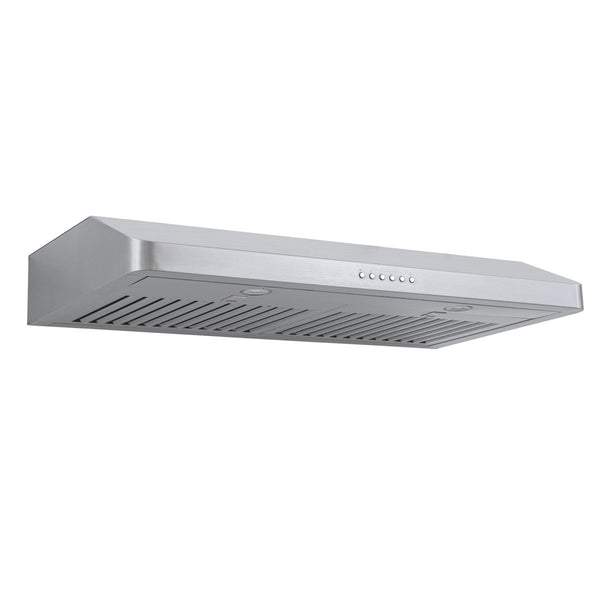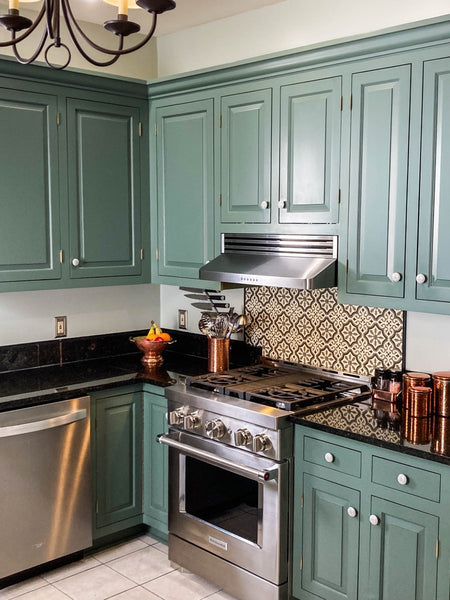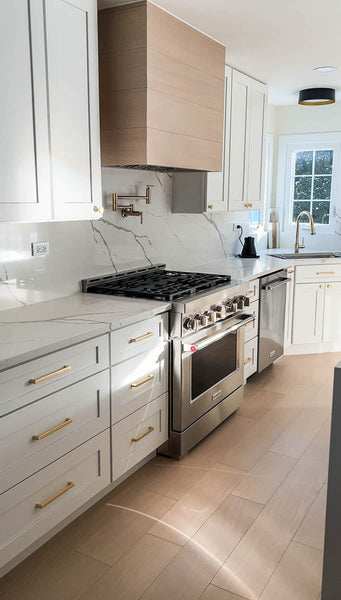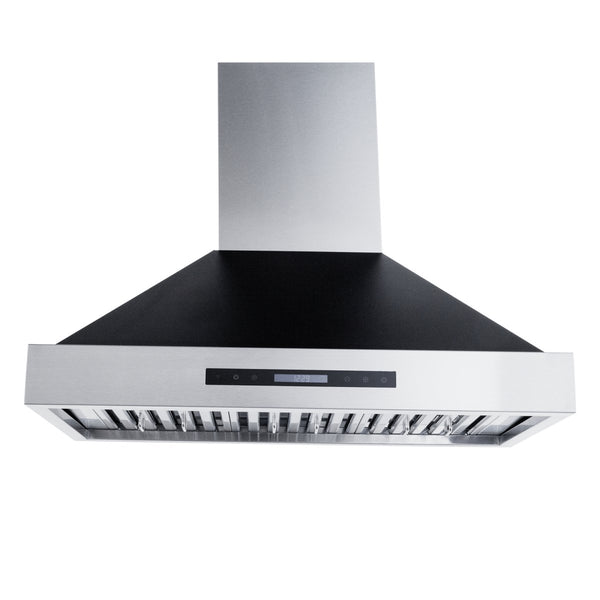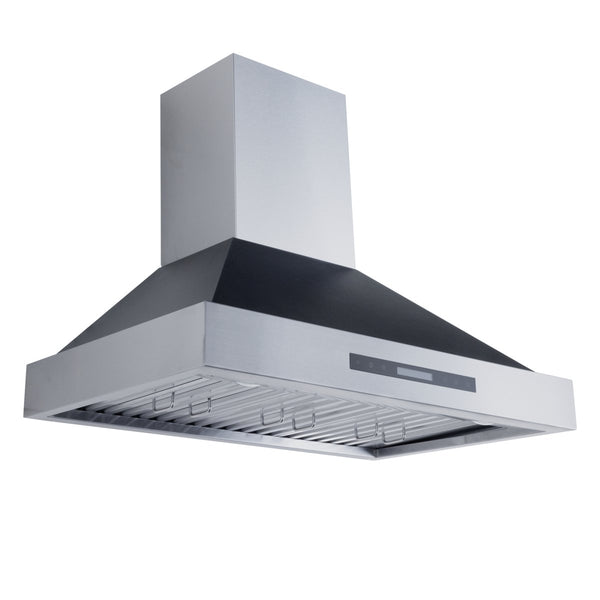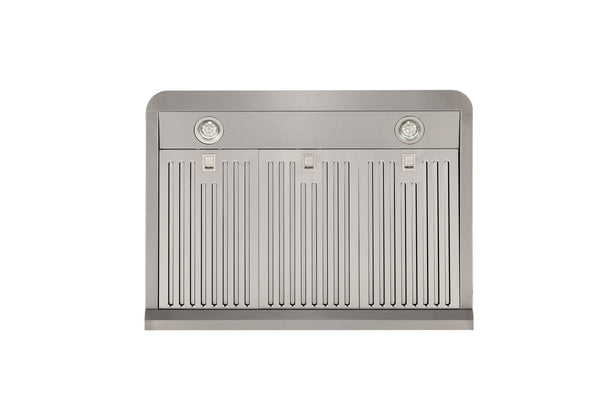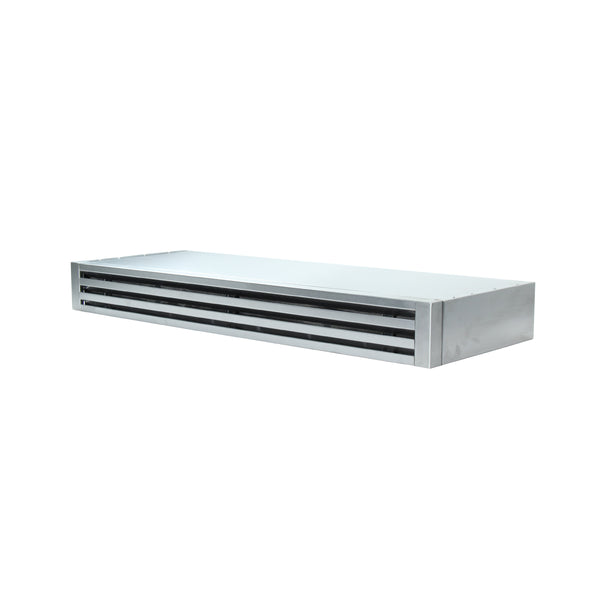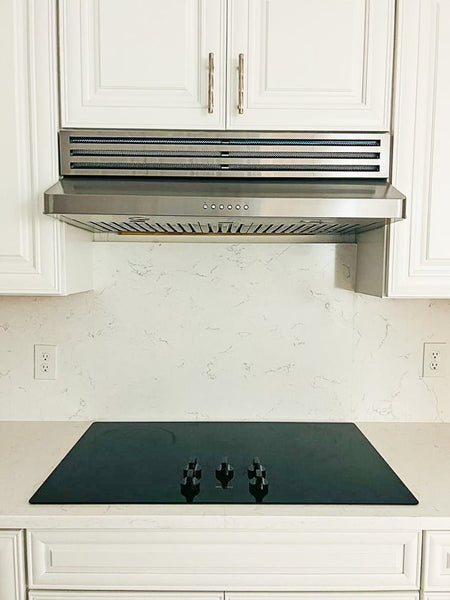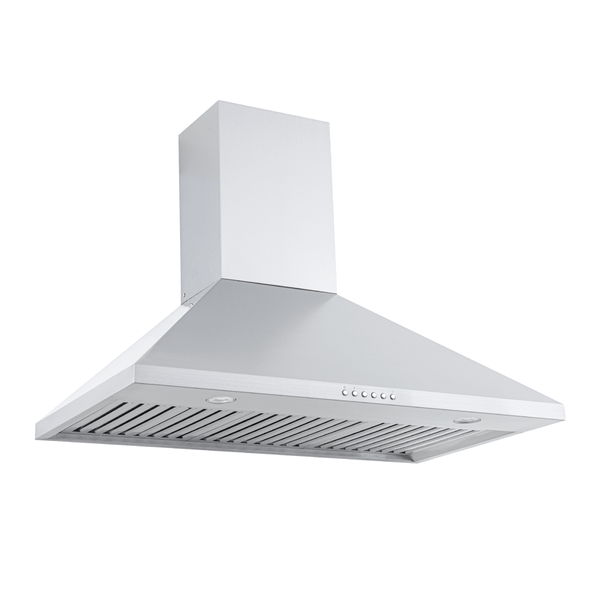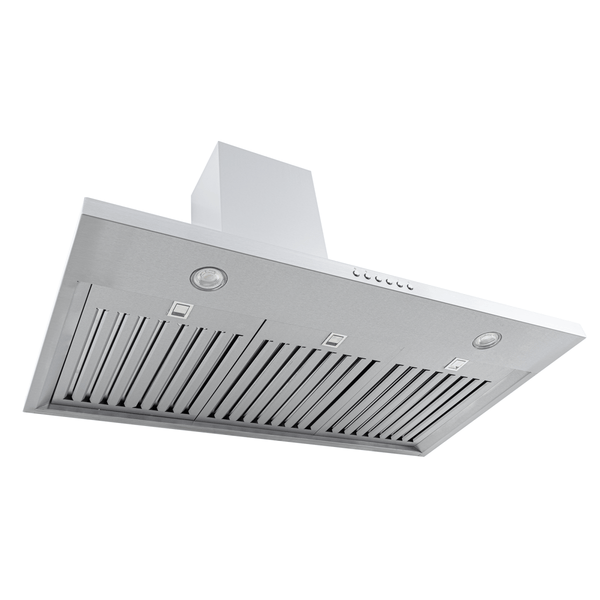Table of Contents
Roof caps are extremely important when it comes to the installation of your range hood and the longevity. Many homeowners install powerful range hoods but overlook the roof cap that vents it outside. The result? Lingering cooking odors, grease buildup, pests, or even water leaks.
Choosing the right roof cap for your kitchen range hood is not an afterthought – it’s essential for keeping your home safe, your air clean, and your hood performing at its best.
Read on to learn why a proper range hood roof cap is so important, why dryer vent caps or generic exhaust vents won’t cut it, and how to pick the best roof caps (and wall caps) for your kitchen vent.

What Is a Range Hood Roof Cap?
A range hood roof cap (also called a kitchen exhaust roof vent cap) is a specialized fitting that covers the termination of your range hood’s duct where it exits through the roof.
In simpler terms, it’s the cover on your roof that lets cooking air out but keeps everything else out. This serves a few critical purposes:
- Keeps out debris and critters: Prevents large debris, leaves, and small animals from entering your ductwork.
- Shields against weather: Blocks rain, snow, and wind from coming down your duct.
- Allows smooth airflow out: Lets your hot, greasy air escape efficiently.
In contrast, a wall cap is used if your duct goes out an exterior wall instead of the roof. Both serve the same purpose.
Why does this matter? Without a roof cap, your duct is basically a big open hole to the outside. Rain can pour in, critters can nest, and debris can clog things up. Over time, an uncapped or poorly capped duct will get obstructed, making your hood work harder and less effectively. Grease and dirt will build up inside the duct because the airflow is hindered. That buildup is not only unsanitary – it’s a fire hazard and a pain to clean.
Roof Caps Recommended for Range Hoods
Installing your range hood can come with a lot of different problems. Therefore it is crucial to select the right type of roof cap to ensure proper ventilation, prevent backdrafts, and protect your home from moisture or pests. These type of roof caps will be best and most effective to use:

Damper Roof Caps
Damper roof caps are among the best options for range hoods.
This cap typically features a low-profile metal housing with an integrated flap (damper) that opens when your hood is turned on and closes when not in use. The perfect blend of useful functionality and minimizing the risk of drafts, insects, and critters entering the home.
This design prevents outside air, rain, snow, and debris from entering your ductwork, while still allowing air from your kitchen to vent out effectively.

Wall Vent Caps (If Roof Access Isn't Ideal)
Venting through a roof is not always practical — such as in very tall homes, complicated rooflines, or certain building codes. Wall vent caps can be a great alternative.
Wall vent caps are installed on an exterior wall rather than the roof and serve a similar function, allowing exhaust air to exit while blocking outside elements.
Tip: Always use a heavy-duty, high-capacity wall vent cap that’s specifically rated for kitchen exhaust — not just a generic wall vent meant for bath fans or dryers.
Note: Both roof & wall caps usually have a damper. If that is the case, and you have an additional damper closer to the hood you will need to remove one of the dampers for proper airflow.
Roof Caps You Should Avoid
There are certain vent caps that you should avoid at all costs. Not all caps are built for the high airflow and greasy conditions created by a range hood.
Using the wrong type can cause poor performance, damage your hood, and even create safety risks. What you should avoid:

Dryer Vent Caps
Dryer vent caps are designed for low-pressure airflow. They are not suitable for grease and air volume that a kitchen range hood produces.
Why They're Problematic:
- The lightweight flaps often stick open or get clogged with grease
- Small openings restrict airflow, stressing your range hood's blower motor
- Prone to leaks and drafts since they're not designed to seal against weather as tightly
Bottom Line: Dryer vent caps cannot handle the demands of a range hood and can significantly reduce the lifespan of your kitchen ventilation system.

Exhaust Caps (Water Heater/Utility Exhausts)
Another common mistake is using general exhaust caps meant for gas water heaters or furnace vents. These caps are specifically designed for venting combustion gases, not for handling the high volume of humid, greasy kitchen air.
Why They're Problematic:
- Water heater exhaust caps are usually too small for proper range hood airflow
- They don't include dampers, exposing your duct to weather and pests
- Not built to resist grease buildup, which can cause long-term clogs and fire hazards
Important Note: Kitchen venting requires wide, smooth airflow to work correctly — water heater caps or other utility exhausts are not designed for this purpose.

Best Roof Cap for Your Range Hood
Now that we’ve covered the what, why, recommended caps, and caps to avoid. Here is the best roof cap that you can choose for your range hood vent:
1. Proline Vexair Roof Caps (6″ – 12″) – Our Top Pick for Quality.
Proline’s Vexair series of roof caps are constructed from high-quality metal and come in two size ranges: one model fits 6″–8″ ducts and a larger model fits 10″–12″ ducts (perfect for high CFM hoods).
Conclusion: Invest in Quality for Safety and Efficiency
Choosing the right roof cap for your range hood is not just about compliance with building codes—it's about protecting your home, improving indoor air quality, and ensuring your ventilation system operates efficiently for years to come.
Don't compromise on this crucial component. Invest in a high-quality, properly sized roof cap designed specifically for range hood applications. Your kitchen—and your lungs—will thank you!
Need Help Choosing the Right Roof Cap?
Our ventilation experts are just a call away! Contact us today for personalized recommendations based on your specific range hood model and home configuration.
Frequently Asked Questions (FAQ) About Roof Caps for Range Hoods
1. Why do I need a special roof cap for a range hood?
A range hood moves a large volume of hot, greasy air compared to appliances like dryers or bathroom fans. Standard exhaust caps can’t handle this type of airflow.
Using a roof cap designed specifically for kitchen ventilation ensures proper air movement, prevents backdrafts, and blocks moisture and pests from entering your ductwork.
2. Can I use a dryer vent cap for my range hood?
No. Dryer vent caps are designed for small, low-pressure airflow. They often clog with grease, restrict the powerful airflow needed by your range hood, and fail to block outside weather properly.
This can lead to system damage, poor performance, and even fire hazards.
3. What size roof cap do I need for my range hood?
The size of your roof cap must match your ductwork. Most residential range hoods use 6-inch, 8-inch, or 10-inch ducts.
- Hoods under 600-900 CFM usually use 6"-8" duct and a 6" roof cap.
- High-powered hoods (900+ CFM) may require a 10" or even 12" duct and cap.
Always match the cap size to your duct size to avoid choking the airflow.
4. What’s the purpose of a damper in a roof cap?
A damper is a flap that automatically opens when your hood is turned on and closes when it’s off. It prevents outside air, rain, snow, and pests from entering your kitchen exhaust system.
Wall caps and roof caps usually have a damper. If that is the case, and you have an additional damper closer to the hood you will need to remove one of the dampers for proper airflow.
5. What material is best for a roof cap?
Look for roof caps made of galvanized steel or stainless steel. They can also be powder coated in black, brown, white, and more. These materials are weather-resistant, durable, and able to withstand the heat, grease, and outdoor conditions that range hood systems face.
Avoid plastic caps or lightweight metals that can warp, corrode, or fail over time.
6. Can I vent my range hood out the wall instead of the roof?
Yes, wall venting is an acceptable alternative, especially if reaching the roof is difficult or costly. However, you must use a wall cap rated for kitchen exhaust, not a standard dryer or bath vent. Wall caps should include a damper and be large enough for your hood’s CFM rating.
7. What happens if I use the wrong roof cap?
Using the wrong roof cap can lead to:
- Poor suction and ventilation
- Grease buildup inside ducts
- Higher risk of mold and moisture damage
- Backdrafts bringing cold air or smells into your home
- Premature wear or damage to your range hood motor
Proper ventilation is critical for safety, performance, and cleanliness — don’t cut corners!
